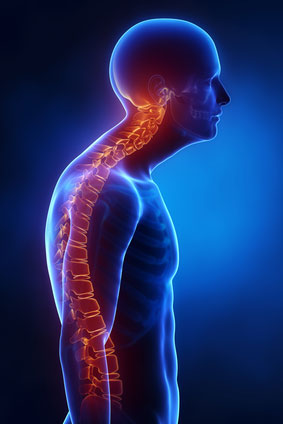Kyphosis can best be described as an exaggerated forward rounding of the back as a result of excessive curvature of the upper spine. The condition is referred to as roundback or hunchback by many. Though there are several types of age-related kyphosis, the condition can occur at any age.
In children, kyphosis normally results from a malformation of the spine or wedging of the spinal bones over time. In old age, the condition is caused by weakness in the spinal bones resulting in compression or cracks.
Depending on the cause and severity of the curve kyphosis can be mild and less problematic, or severe and disfiguring. When the condition results in excess pressure on the spine it can cause serious pain. There are chances of the problem leading to breathing difficulties due to serious pressure on the lungs.
Common Causes of Kyphosis
In summary, kyphosis is deeply connected to abnormal vertebrae, which can be caused by several other things. Anything that can cause the vertebrae in the upper back to become more wedged is a causative factor of kyphosis. The potential causes include:
- Birth defects
- Aging
- Broken or crushed vertebrae
- Slipped discs
- Scoliosis
- Osteoporosis
- Scheuermann’s disease in children
- Marfan syndrome, Ehlers-Danlos syndrome and other syndromes in children
- Bone degeneration diseases like arthritis
- And few other conditions that are less common like infections of the spine, tumors, muscular dystrophy, polio, Paget disease and more.
Symptoms of Kyphosis
Mild kyphosis does not produce any visible signs. In a few cases, issues like an abnormally curved spine, back pain and stiffness can be experienced by kyphosis patients.
When to See a Doctor
Generally, it is advisable to seek medical help when you notice an increased curve in your spine or the upper back of your loved one. You shouldn’t delay any further if the abnormal curvature of the spine is accompanied by pain, fatigue or breathing difficulties. Seeing a doctor will help minimize the risks of complications, including serious breathing problems, limited physical functions, digestive problems and body image problems.
Treatment
Different treatment options can be explored depending on the underlying cause of kyphosis and the severity of the problem. The most common treatments for the condition include:
- Physical therapy
- Use of braces
- Tumor removal and spinal fusion
- Posture exercise
- Corrective surgery in severe cases
There are treatment options that are targeted at relieving the symptoms of kyphosis, such as medication, yoga and losing excess weight.
Kyphosis is a spinal problem that may not cause serious health issues in some individuals. It can cause serious pain and posture issues in others, requiring treatment to manage symptoms and minimize the risks of complications. You should see a doctor when you experience any signs and symptoms of kyphosis and find meaningful ways to improve your posture or that of your loved one.



